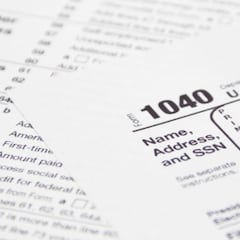What is a required minimum distribution? Can it affect your taxes?
Depending on what type of retirement account you have, you’ll have to begin withdrawing a minimum amount each year which could affect your tax declaration.

“You cannot keep retirement funds in your account indefinitely,” states the Internal Revenue Service. Depending on what type of retirement account you have, you’ll have to begin withdrawing a minimum amount each year at a certain age, others once the owner of the account has died.
There are specific dates as well for when you must have withdrawn a determined required minimum distribution (RMD) from your retirement account. Those annual drawdowns may affect your tax declarations each year for retirees, or beneficiaries of an inherited account. We’ll walk you through the basics.
What is a required minimum distribution? Can it affect your taxes?
The SECURE 2.0 Act made changes to when individuals must begin making required minimum distribution. Prior to the legislation, those who turned 72 before 1 January 2023 had to start withdrawing a determined amount of funds from the types of retirement accounts listed below by 1 April the year after the reached RMD age (2023 RMDs due by April 1, 2024, are still required).
Now the age has risen in 2023 for those who turned 72 after 31 December 2022, they must begin RMDs at age 73. There will be further increases in 2030 and 2033 to age 74 and 75, respectively.
Minimum distribution rules apply to original account holders and their beneficiaries in these types of plans:
- traditional IRAs
- SEP IRAs
- SIMPLE IRAs
- 401(k) plans
- 403(b) plans
- 457(b) plans
- profit sharing plans
- other defined contribution plans
- Roth IRA beneficiaries
After your first RMD, all successive RMDs must be withdrawn by 31 December. Account holders can take out more than the minimum amount if they choose.
Required minimum distributions are designed to prevent taxpayers from deferring taxes on pre-tax income put into retirement accounts indefinitely. The withdrawals will be treated as taxable income in the year they were taken from a retirement account. That is unless the money was taxed previously or can be received tax-free, such as qualified distributions from designated Roth accounts.
The standard IRS income tax brackets based on you adjusted gross income will apply for the amount of tax that you will be on the hook for. So the amount that you take out could potentially put you into a higher tax bracket.
How to calculate required minimum distributions
Calculating the correct RMD amount is important as the IRS will apply a 25% excise tax on the amount not withdrawn. That may possibly drop to “10% if the RMD is timely corrected within two years,” according to the IRS.
You can calculate your required minimum distribution using one of the three tables provided by the IRS, these include the Joint and Last Survivor table, Uniform Lifetime Table and Single Life Expectancy Table. Which table you must use depends on your particular situation indicated below.
- Last Survivor Table: Married, spouse is sole beneficiary of the account and if spouse is more than 10 years younger than account owner
- Uniform Lifetime Table: All other original IRA owners
- Single Life Expectancy Table: Inherited an IRA
Related stories
Your required minimum distribution amount is calculated for the current year by dividing your account balance at the end of last year by your life expectancy found on the IRS tables. To make the task slightly easier, Nerdwallet provides an online RMD calculator that you can use.
Follow all the latest news on AS USA.


